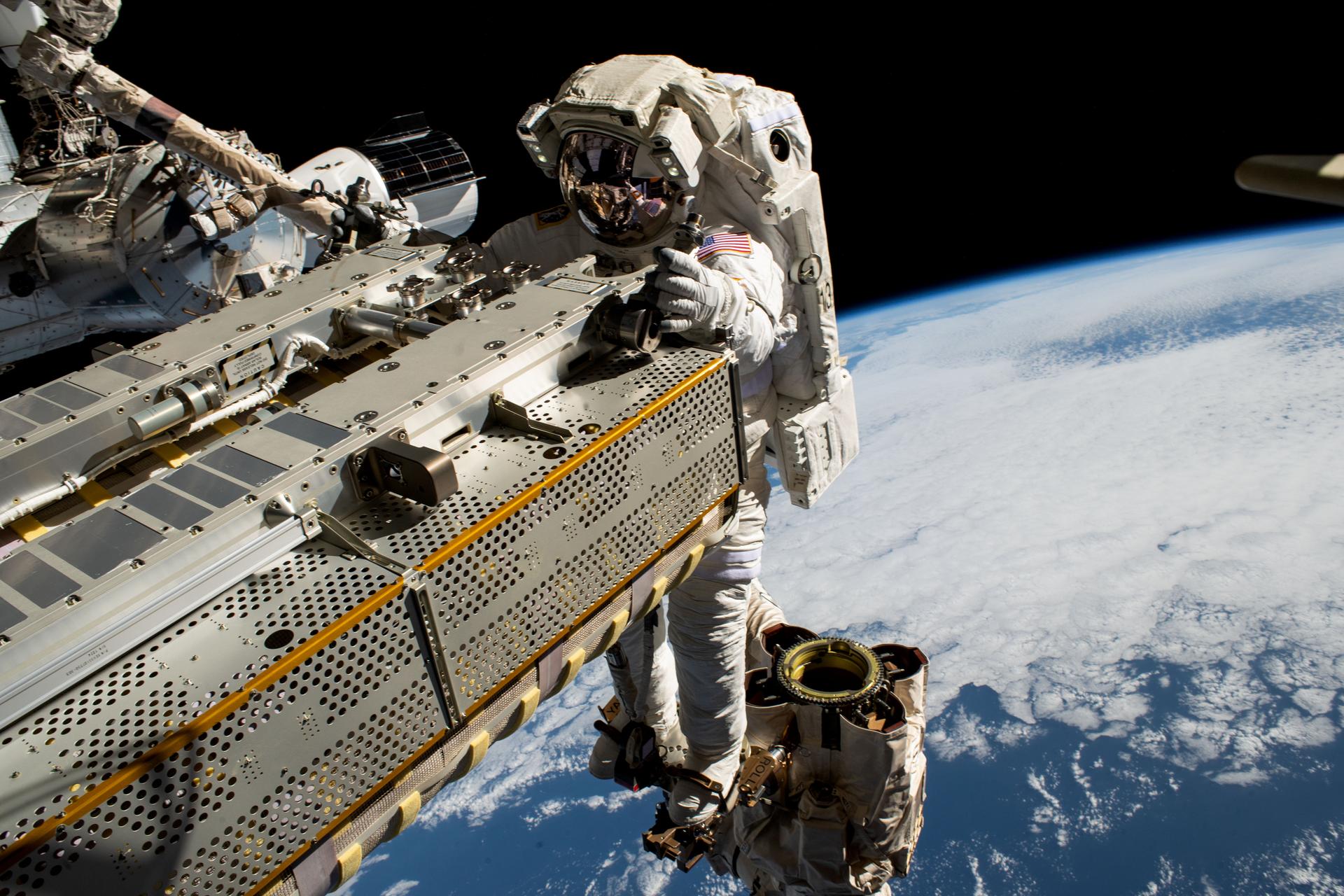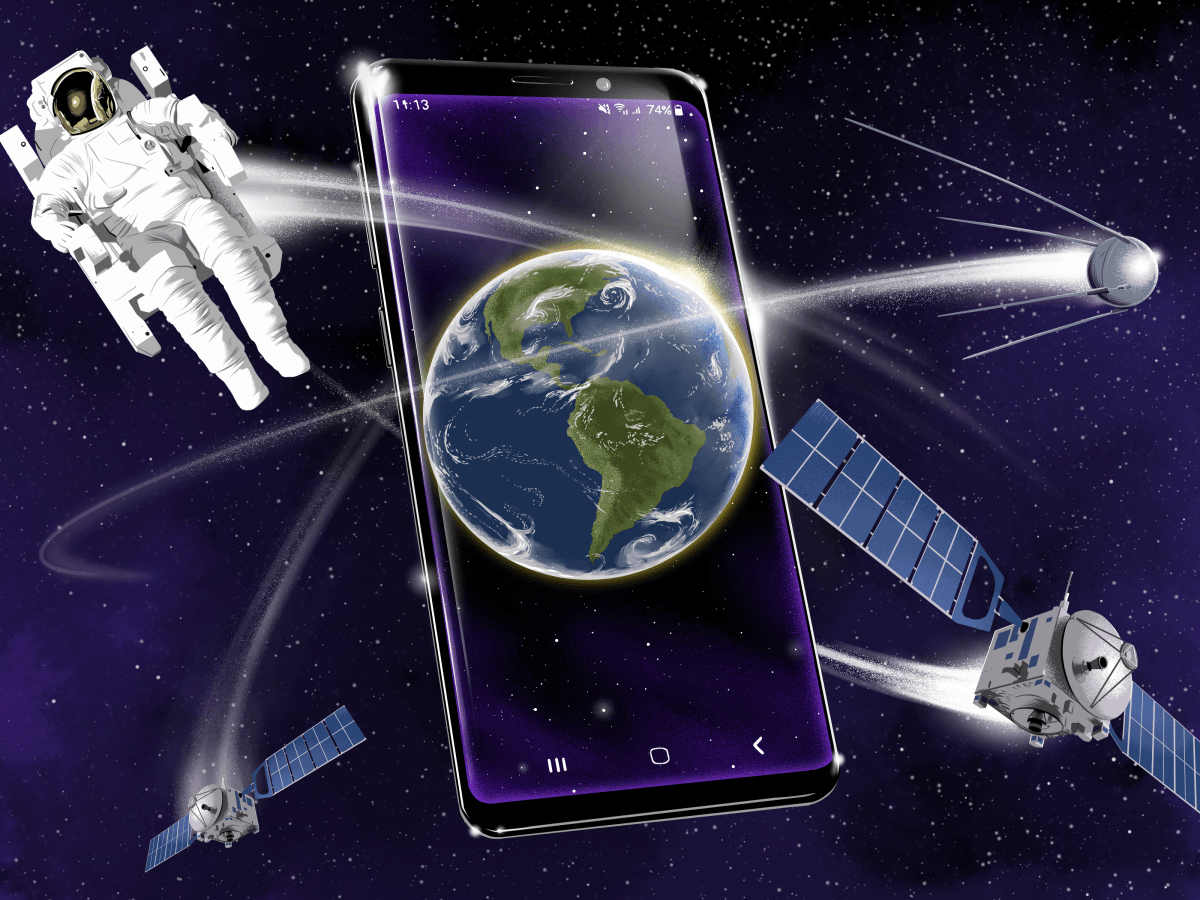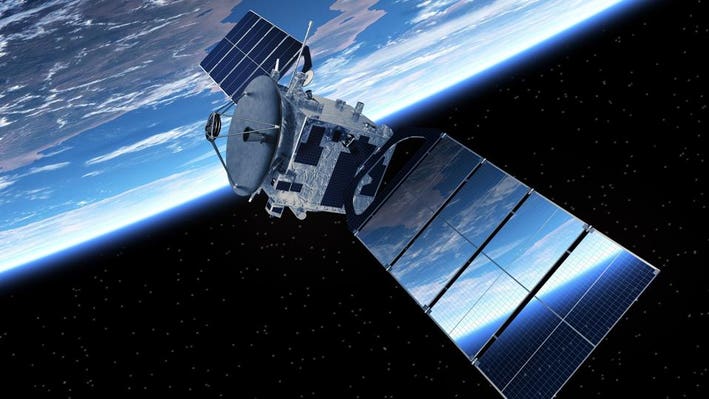Space technology involves the development and application of various technologies for space exploration and activities. It includes satellites, spacecraft, and space stations.
Space technology plays a crucial role in modern life. It enhances communication, weather forecasting, and navigation. Satellites orbiting Earth provide real-time data for various applications. These advancements have revolutionized how we gather and use information. Space missions contribute to scientific knowledge and inspire technological innovations.
The International Space Station serves as a hub for research and international collaboration. Private companies are also entering the space industry, pushing boundaries further. Space technology continues to evolve, promising new possibilities for humanity. With ongoing advancements, the future of space exploration looks promising and transformative. It propels us into new frontiers of understanding and capability.

Credit: www.nasa.gov
The New Frontier: Space Technology Milestones
The realm of space technology is ever-evolving. With each milestone, humans push further into the cosmos. These advances shape our understanding of the universe. From satellites to human spaceflight, the journey is remarkable.
Pioneering Satellites And Probes
Satellites and probes have revolutionized space exploration. They gather data from distant planets and stars. Some key milestones include:
- Sputnik 1: The first artificial satellite launched in 1957.
- Voyager Probes: Launched in 1977, these probes explored outer planets.
- Hubble Space Telescope: Launched in 1990, it provided clear images of space.
Satellites now assist in weather forecasting and GPS navigation. Probes have landed on comets and Mars, sending valuable data back to Earth.
Human Spaceflight Achievements
Human spaceflight represents a significant leap in space technology. Here are some monumental achievements:
- Yuri Gagarin: The first human in space in 1961.
- Apollo 11: The first manned moon landing in 1969.
- International Space Station (ISS): A collaborative space habitat since 1998.
Space agencies now work on sending humans to Mars. These milestones inspire future generations to explore the stars.
| Milestone | Year |
|---|---|
| Sputnik 1 | 1957 |
| Yuri Gagarin’s Spaceflight | 1961 |
| Apollo 11 Moon Landing | 1969 |
| Hubble Space Telescope Launch | 1990 |
| International Space Station | 1998 |
Revolutionary Propulsion Systems
Space technology is evolving rapidly. One of the most exciting advancements is in revolutionary propulsion systems. These systems are transforming our ability to explore the cosmos. From reusable rockets to nuclear propulsion, the future looks promising.
Reusable Rocket Breakthroughs
Reusable rockets are a game-changer. They make space travel cheaper and more sustainable. Companies like SpaceX and Blue Origin are leading the way.
- SpaceX has developed the Falcon 9 and Falcon Heavy rockets.
- Blue Origin is working on the New Shepard and New Glenn rockets.
These rockets can be launched, landed, and reused multiple times. This reduces the cost of each launch significantly. It also minimizes waste and environmental impact.
| Company | Rocket | Reusable Flights |
|---|---|---|
| SpaceX | Falcon 9 | Over 100 |
| Blue Origin | New Shepard | Over 15 |
Nuclear Thermal And Electric Propulsion
Nuclear propulsion is the next frontier in space travel. It offers higher efficiency and speed compared to chemical rockets.
- Nuclear Thermal Propulsion (NTP): Uses a nuclear reactor to heat a propellant.
- Nuclear Electric Propulsion (NEP): Uses nuclear energy to generate electricity for ion thrusters.
NTP can shorten the travel time to Mars. NEP is ideal for long-duration missions to the outer planets.
These advanced propulsion systems could revolutionize space exploration. They promise faster travel times and greater efficiency.
The future of space travel looks bright with these innovations. Our reach into the cosmos continues to expand.
Miniaturization Of Spacecraft
The miniaturization of spacecraft has revolutionized space exploration. Smaller, more efficient spacecraft are changing the industry. These tiny spacecraft are making space more accessible.
Cubesats And Nanosatellites
Cubesats and nanosatellites are small but powerful. They weigh less than 10 kilograms. These small sizes reduce launch costs significantly.
They are built using commercial off-the-shelf parts. This keeps the cost low and encourages innovation. Universities and small companies can now participate in space missions.
- Cubesats fit into a standard 10cm x 10cm x 10cm unit.
- Nanosatellites are slightly larger, up to 10 kilograms.
Impact On Cost And Accessibility
The miniaturization of spacecraft lowers costs. Smaller spacecraft require less fuel and smaller rockets. This makes launches more affordable.
- Launch costs can be reduced by up to 90%.
- More frequent launches are now possible.
Smaller spacecraft are opening new opportunities. Developing countries and small organizations can now explore space. The playing field is leveling.
- More countries can afford space missions.
- Universities can conduct their own space research.
- Startups can innovate with new space technologies.
The future of space exploration is bright. Miniaturization is making space accessible to all. The next great discovery could come from a tiny spacecraft.
Advancements In Space Telescopes
Space telescopes have revolutionized our understanding of the cosmos. They observe distant galaxies, stars, and planets. Advancements in this field promise even greater discoveries. Let’s explore the latest in space telescopes.
Next-generation Observatories
Next-generation observatories like the James Webb Space Telescope (JWST) push the boundaries. JWST will observe the universe in infrared light. This allows us to see through cosmic dust clouds. It will study the earliest galaxies and stars.
The Wide Field Infrared Survey Telescope (WFIRST) will follow JWST. It will have a wider field of view. This means it can observe more of the sky at once. WFIRST will help us understand dark energy and dark matter.
| Telescope | Launch Year | Key Feature |
|---|---|---|
| James Webb Space Telescope (JWST) | 2021 | Infrared Observation |
| Wide Field Infrared Survey Telescope (WFIRST) | 2025 | Wide Field of View |
Exoplanet Discovery Techniques
Discovering exoplanets is a major goal of space telescopes. Transiting Exoplanet Survey Satellite (TESS) is a key player. TESS uses the transit method. It detects planets by observing dips in starlight. When a planet passes in front of its star, the light dims.
The Radial Velocity Method is another technique. This method measures the wobble of stars. Planets exert a gravitational pull on their stars. This causes the stars to wobble slightly. By measuring this wobble, we can infer the presence of planets.
Another exciting technique is Direct Imaging. This involves taking actual pictures of exoplanets. It’s challenging because stars are much brighter than planets. Specialized instruments block the star’s light, allowing the planet to be seen.
- Transit Method: Observes dips in starlight when a planet passes by.
- Radial Velocity Method: Measures the wobble of stars caused by orbiting planets.
- Direct Imaging: Takes direct pictures of exoplanets by blocking star light.
These techniques have already discovered thousands of exoplanets. With new telescopes, we will find many more. We might even find signs of life.
Robotic Explorers: Rovers And Drones
Space technology has advanced rapidly. Robotic explorers like rovers and drones play a key role. These machines help us understand other planets. They explore places humans can’t reach.
Mars Exploration Rovers
Mars rovers are robotic explorers sent to Mars. They gather vital information about the planet. NASA’s Curiosity Rover is a famous example. It studies Mars’ climate and geology. Another rover, Perseverance, searches for signs of ancient life.
Mars rovers have many tools. They have cameras, drills, and spectrometers. These tools help in analyzing rocks and soil. The data helps scientists back on Earth. They learn more about Mars’ past and present.
Drone Technology For Planetary Surveys
Drones are becoming important for planetary surveys. They can fly over difficult terrains. This is useful for mapping and data collection. NASA’s Ingenuity is the first drone to fly on Mars. It works alongside the Perseverance rover.
Drones have many advantages. They cover large areas quickly. They capture high-resolution images. They also access places rovers can’t reach. This makes them valuable for planetary exploration.
| Robotic Explorer | Key Features | Primary Use |
|---|---|---|
| Mars Rovers |
|
Analyzing rocks and soil, studying climate and geology |
| Drones |
|
Mapping, data collection, accessing difficult terrains |
Both rovers and drones are crucial. They help us explore and understand other planets. Their technology continues to evolve. This opens new possibilities for space exploration.
Artificial Intelligence In Space
The use of Artificial Intelligence (AI) in space technology is revolutionizing exploration. AI helps spacecraft operate autonomously, analyze data, and perform complex tasks. These capabilities enhance missions, reduce costs, and improve safety.
Autonomous Systems For Exploration
AI enables autonomous systems that can explore distant planets and moons. These systems navigate harsh environments without human intervention. They gather data, map terrain, and identify interesting features.
AI-powered rovers and drones make real-time decisions. They avoid obstacles, plan routes, and prioritize tasks. This autonomy increases mission success rates and allows for more complex explorations.
- Self-navigation
- Obstacle avoidance
- Data collection
- Task prioritization
Ai For Spacecraft Maintenance
AI plays a crucial role in spacecraft maintenance. It monitors systems, predicts failures, and suggests repairs. This proactive approach reduces downtime and extends mission life.
AI algorithms analyze vast amounts of data from spacecraft sensors. They detect anomalies and diagnose issues before they become critical. This predictive maintenance ensures the spacecraft remains operational.
| Maintenance Task | AI Role |
|---|---|
| System Monitoring | Continuous data analysis |
| Failure Prediction | Anomaly detection |
| Repair Suggestions | Automated diagnostics |
With AI, spacecraft can self-maintain and self-repair. This capability reduces the need for human intervention. It also ensures missions can continue without costly delays.
In-situ Resource Utilization (isru)
In-Situ Resource Utilization (ISRU) is a game-changer in space technology. It involves using materials found in space to support missions. This reduces the need to transport everything from Earth, making space missions more sustainable and cost-effective.
Lunar And Martian Resource Extraction
Lunar and Martian Resource Extraction focuses on using resources found on the Moon and Mars. These celestial bodies have valuable materials like water, minerals, and metals. Water can be split into hydrogen and oxygen for fuel and life support.
For extracting these resources, technologies like robotic miners and drilling systems are essential. These tools can dig and process soil and ice. They can work in harsh environments to gather materials needed for survival and technology.
Technologies For Space Manufacturing
Technologies for Space Manufacturing enable building structures using space materials. This includes creating habitats, tools, and spare parts. 3D printing is a key technology here. It can use local materials to create complex items.
Another important technology is metal extraction. Metals from lunar and Martian soil can be used in construction. This reduces reliance on Earth-based materials and supports long-term missions.
| Technology | Application |
|---|---|
| Robotic Miners | Extract soil and ice |
| 3D Printing | Create tools and parts |
| Metal Extraction | Build structures |

Credit: www.kaspersky.com
Space Habitats And Colonization
Humans have always dreamed of living in space. With new technology, this dream is becoming a reality. Space habitats and colonization are at the forefront of space exploration. Scientists and engineers are working hard to make this possible.
Designing Space Stations For Long-term Habitation
Designing space stations for long-term living is challenging. Engineers must think about many factors. They must ensure the station can support human life for long periods. This includes air, water, and food supply.
Space stations need to be safe from space hazards. Radiation and micrometeoroids are big dangers. The stations must have strong shields to protect the inhabitants.
| Essential Elements | Details |
|---|---|
| Life Support | Air, water, and food supply |
| Safety | Shielding from radiation and micrometeoroids |
| Comfort | Living spaces, recreation, and work areas |
The Vision For Mars Colonies
Mars is the next big goal for space colonization. Scientists believe Mars could support human life. But we need to create the right conditions first. Terraforming is one idea. This means changing Mars to make it more like Earth.
Building habitats on Mars is another challenge. These habitats must protect people from the harsh environment. Mars has extreme temperatures and dust storms. Engineers are designing strong, safe buildings.
- Terraforming: Changing Mars to be more like Earth
- Habitat Design: Safe structures for living on Mars
- Resource Use: Using Mars’ resources for survival
The vision for Mars colonies is exciting. It brings us closer to living on another planet. With continuous innovation, space colonization will be part of our future.
Commercial Spaceflight And Tourism
Space technology is booming, and commercial spaceflight is a big part of it. Private companies are pushing the boundaries of space travel. They aim to make space accessible to everyone. This is exciting for space enthusiasts and tourists alike.
Private Sector Achievements
The private sector has achieved a lot in space travel. Companies like SpaceX and Blue Origin lead the way. SpaceX, founded by Elon Musk, has made history with reusable rockets. These rockets reduce costs and make space travel more sustainable. Blue Origin, led by Jeff Bezos, focuses on safe and affordable space travel.
Here is a quick look at some key achievements:
| Company | Achievement | Year |
|---|---|---|
| SpaceX | First privately-funded spacecraft to reach orbit | 2008 |
| Blue Origin | First vertical landing by a reusable rocket | 2015 |
| Virgin Galactic | First commercial spaceflight with civilian crew | 2021 |
The Future Of Space Tourism
Space tourism is the next big thing. Companies are already selling tickets for space trips. Imagine floating in zero gravity and seeing Earth from space. This is becoming a reality.
Here are some key points about the future of space tourism:
- Affordable Pricing: Costs will go down as technology improves.
- Safety: New technologies will make space travel safer.
- Accessibility: More people will be able to experience space.
Space tourism will change how we see our planet. It will inspire future generations to reach for the stars.
Space Policy And International Collaboration
Space technology is evolving rapidly. Countries must work together to ensure safety and progress. International collaboration in space policy plays a crucial role. It helps regulate space traffic and promotes joint missions. These efforts enhance scientific knowledge and technological advancements.
Regulating Space Traffic
Space is getting crowded with satellites and debris. Regulating space traffic is essential to prevent collisions. Governments and agencies develop rules to manage space traffic effectively. These rules ensure satellites can operate safely.
Some measures include:
- Tracking all objects in space
- Setting guidelines for satellite launches
- Enforcing deorbiting rules for old satellites
Proper regulation helps prevent accidents and keeps space safe for everyone.
Global Partnerships For Space Exploration
Global partnerships are vital for successful space missions. No single country can achieve everything alone. Collaborative efforts lead to shared resources and knowledge.
Examples of successful partnerships:
- International Space Station (ISS)
- NASA and ESA joint missions
- Roscosmos and CNSA collaborations
These partnerships enable groundbreaking discoveries and innovations.
Collaborative missions also reduce costs. Countries share expenses and expertise. This makes space exploration more feasible for all.
Working together builds trust and fosters peaceful relations. It paves the way for future exploration and colonization of other planets.

Credit: www.linkedin.com
Frequently Asked Questions
What Is Space Technology?
Space technology refers to tools, machines, and systems used in space exploration. It includes satellites, spacecraft, and space stations. This technology helps us explore outer space, conduct scientific research, and improve communication on Earth.
How Does Space Technology Benefit Earth?
Space technology benefits Earth through better weather forecasting, global communications, and GPS navigation. It also aids in environmental monitoring and disaster management. These advancements improve our daily lives and safety.
What Are Satellites Used For?
Satellites are used for communication, weather monitoring, and GPS navigation. They also help in scientific research and environmental observation. Satellites provide data crucial for various applications on Earth.
How Do Rockets Work In Space?
Rockets work in space by expelling gas through a nozzle, creating thrust. This thrust propels the rocket forward. Rockets carry satellites and astronauts into space, enabling exploration and research.
Conclusion
Space technology continues to revolutionize various fields, from communication to exploration. Its advancements have significantly impacted our daily lives. As we look to the future, the potential for further innovation is immense. Staying informed about these developments is crucial. Embrace the exciting possibilities that space technology offers and watch our world transform.

